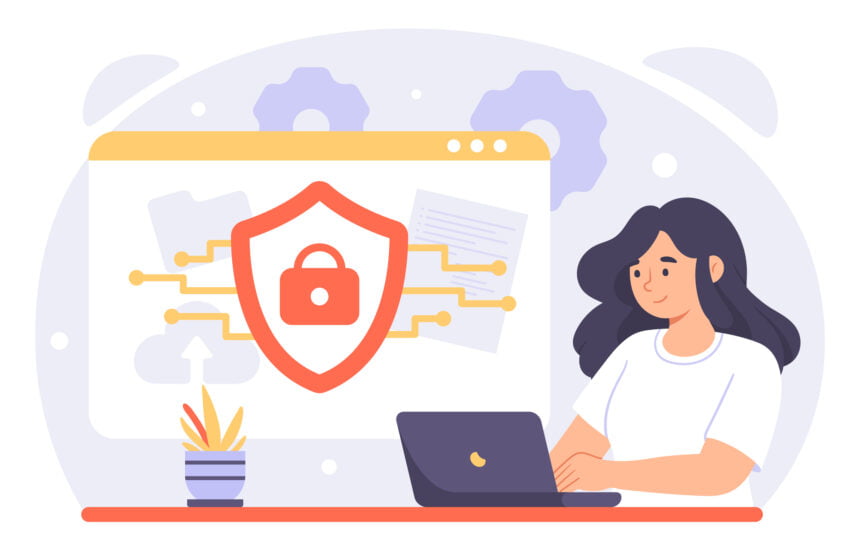Cybersecurity is a growing concern for many businesses. The James Clark School of Engineering reports that around 2,200 cyberattacks take place every day.
A lot of factors can create cybersecurity risks. One unfortunate reality is that our growing reliance on AI has led to greater risks of cyberattacks. The UK National Cyber Security Centre talks about some of these concerns in this post.
Companies using AI must adopt strong cybersecurity practices to protect sensitive data and maintain system integrity. While AI can be invaluable to cybersecurity, it also creates some risks. AI systems can be used for malicious purposes if hackers gain control over them, which can lead to significant financial and reputational damage.
Good cybersecurity ensures data privacy, prevents unauthorized access, and safeguards intellectual property. Additionally, it fosters customer trust and compliance with regulatory standards, which are essential for sustainable business operations and innovation.
AI Creates Cybersecurity Risks that Must Be Addressed
In an era where artificial intelligence drives business growth, modern IT departments face the critical challenge of safeguarding their organizations’ data and systems from an ever-evolving landscape of cyber threats. It is important to recognize the vulnerabilities AI creates and know how to use it to your advantage.
Effective cybersecurity practices are no longer optional; they are essential for ensuring business continuity and protecting sensitive information. In this article, we’ll be going through some best practices that IT departments should implement to enhance their cybersecurity posture.
1. Conduct Regular Risk Assessments
Understanding the specific threats that your organization faces is the first step in building a robust cybersecurity strategy. Regular risk assessments help identify vulnerabilities, evaluate potential impacts, and prioritize mitigation efforts.
These assessments should cover all aspects of the IT environment, including hardware, software, networks, and human factors.
2. Implement Multi-Factor Authentication (MFA)
Passwords alone are no longer sufficient to protect sensitive information. Multi-Factor Authentication (MFA) adds an extra layer of security by requiring users to provide two or more verification factors to gain access to a system.
This could include something the user knows (password), something the user has (security token), or something the user is (biometric verification). Implementing MFA significantly reduces the risk of unauthorized access.
3. Regularly Update and Patch Systems
Keeping software and systems up-to-date is critical in defending against cyber attacks. Cybercriminals often exploit known vulnerabilities in outdated software.
Therefore, it is essential to have a robust patch management process in place. This includes regularly updating operating systems, applications, and firmware to ensure all known security vulnerabilities are addressed promptly.
4. Educate and Train Employees
(Unsplash)
Human error is one of the leading causes of cybersecurity breaches. Regular training programs can help employees recognize and avoid common threats such as phishing attacks, social engineering, and malware.
A well-informed workforce is a crucial line of defense against cyber threats. Training should be ongoing and include simulations and drills to keep security top-of-mind for all employees.
5. Utilize Advanced Threat Detection Tools
Modern IT departments should leverage advanced threat detection and response tools to identify and mitigate potential threats proactively. These tools use machine learning and artificial intelligence to detect unusual patterns and behaviors that may indicate a cyber attack.
By implementing solutions such as Intrusion Detection Systems (IDS) and Security Information and Event Management (SIEM) systems, IT departments can enhance their ability to detect and respond to threats in real-time.
6. Develop and Test Incident Response Plans
(Unsplash)
Despite the best preventative measures, incidents can still occur. Having a well-defined incident response plan ensures that your organization can respond quickly and effectively to minimize damage.
The plan should outline specific roles and responsibilities, communication protocols, and recovery steps. Regular testing and updating of the incident response plan are crucial to ensure its effectiveness during an actual event.
7. Encrypt Sensitive Data
Data encryption is a fundamental security measure that protects sensitive information from unauthorized access. By encrypting data at rest and in transit, organizations can ensure that even if data is intercepted or accessed without authorization, it remains unreadable and unusable.
Implementing strong encryption standards and key management practices is essential for maintaining data integrity and confidentiality.
8. Implement Network Segmentation
Network segmentation involves dividing a network into smaller, isolated segments to limit the spread of cyber attacks. By segmenting networks, IT departments can control access to sensitive areas and reduce the impact of a breach.
This approach also simplifies monitoring and management of network traffic, making it easier to detect and respond to anomalies.
9. Secure Remote Work Environments
The rise of remote work has introduced new cybersecurity challenges. IT departments must ensure that remote employees have secure access to corporate resources. This includes implementing Virtual Private Networks (VPNs), secure remote desktop solutions, and enforcing strong security policies for personal devices.
For businesses looking for affordable options, checking out the cheapest monthly VPN plans can provide a cost-effective solution to secure remote connections.
10. Regularly Backup Data
Data backups are a critical component of any cybersecurity strategy. Regular backups ensure that data can be restored in the event of a ransomware attack, hardware failure, or other data loss incidents.
IT departments should implement automated backup solutions and store backups in secure, offsite locations. Additionally, regular testing of backup restoration processes is essential to ensure data can be recovered quickly and accurately.
Summing Up
Cybersecurity is a dynamic and ongoing challenge for modern IT departments. By implementing these best practices, organizations can significantly enhance their security posture and protect their critical assets from cyber threats.
Proactive measures, continuous monitoring, and a culture of security awareness are key components in building a resilient and secure IT environment.
As the threat landscape evolves, so must the strategies and tools used to defend against it, ensuring that businesses remain protected in an increasingly digital world. Take action today to optimize your organization’s safety and security because prevention is always better than cure.







